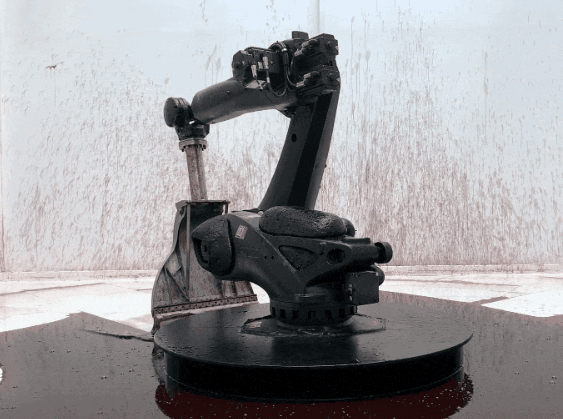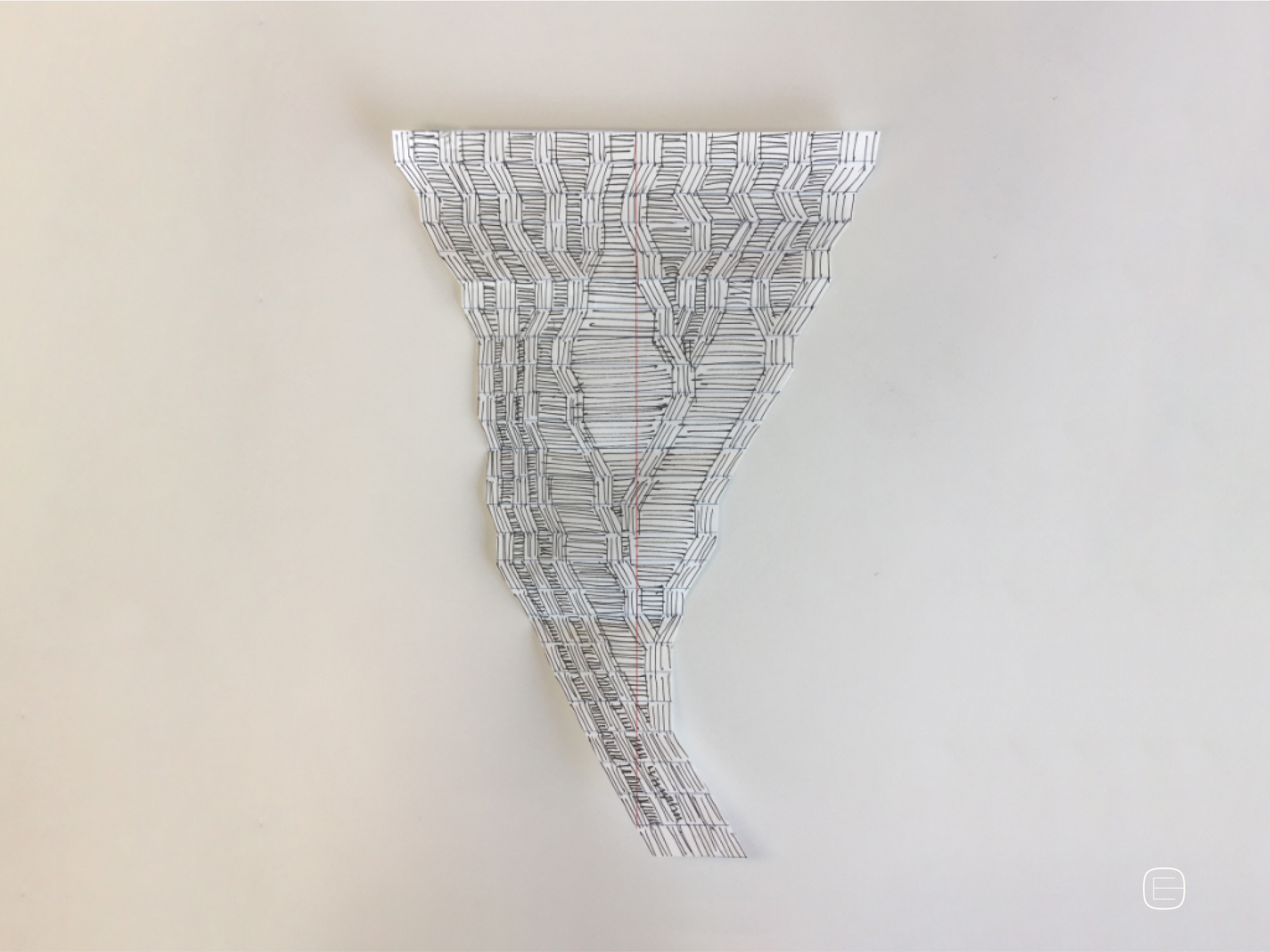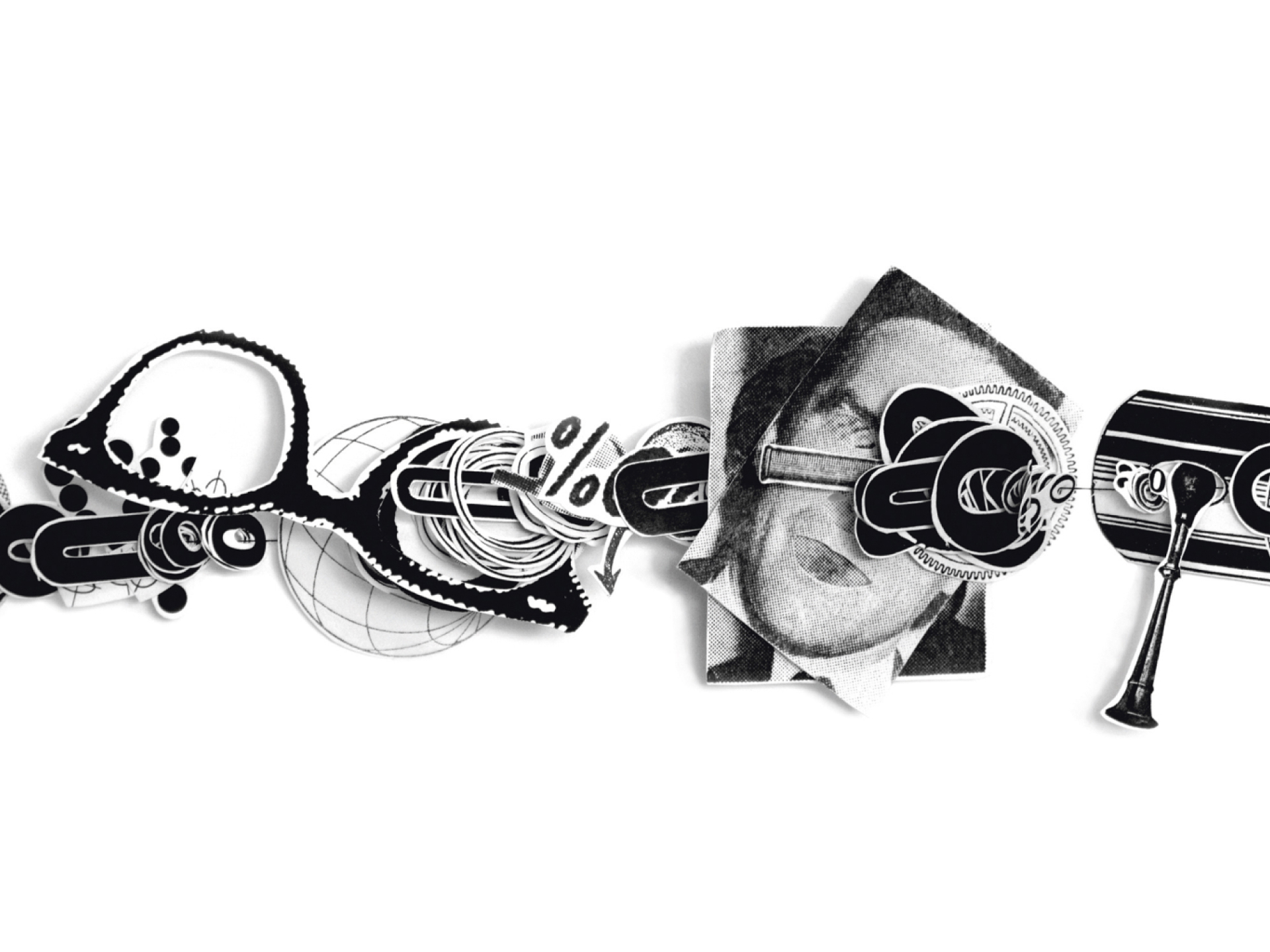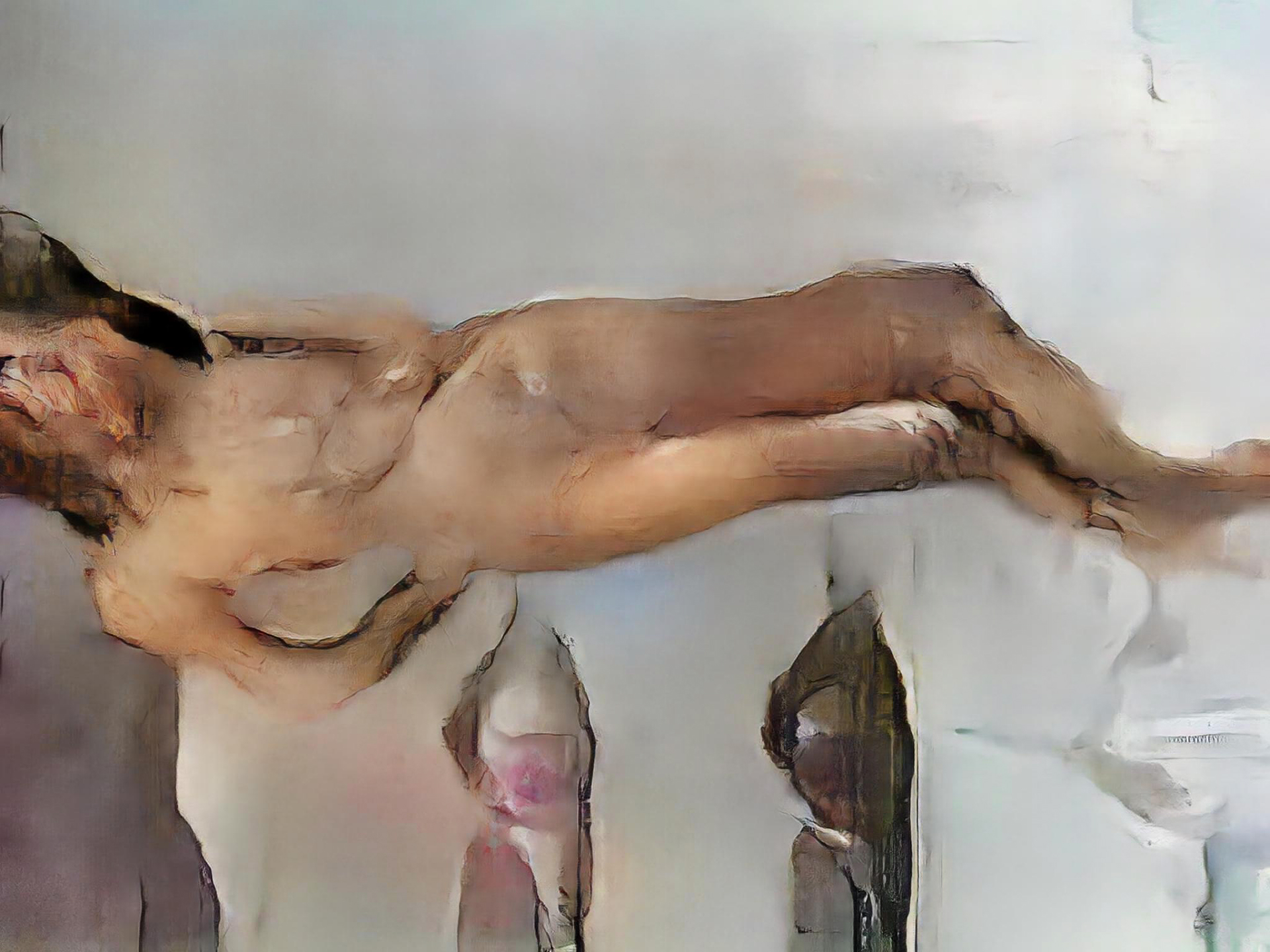Sun Yuan & Peng Yu 孙原 & 彭禹
Can’t Help Myself 难自禁
2016–2019

What is it about watching robots do their work that’s so soothing and disturbing at the same time? Even though this machine doesn’t look like a humanoid, I see the pointless work it’s doing and can identify with it. There’s a shared experience through action and behavior.
I also get the impression this robot is embarrassed or ashamed. Maybe it spilled or killed something and it’s desperately trying to clean up the mess or evidence. There really is a sweet feeling in the futility of this robot trying to clean up the mess.
I was mesmerized when I first saw this clip—would love to see it close up. Brilliant piece of work.
Guggenheim:
—Xiaoyu Weng
In this work commissioned for the Guggenheim Museum, Sun Yuan & Peng Yu employ an industrial robot, visual-recognition sensors, and software systems to examine our increasingly automated global reality, one in which territories are controlled mechanically and the relationship between people and machines is rapidly changing. Placed behind clear acrylic walls, their robot has one specific duty, to contain a viscous, deep-red liquid within a predetermined area. When the sensors detect that the fluid has strayed too far, the arm frenetically shovels it back into place, leaving smudges on the ground and splashes on the surrounding walls. The idea to use a robot came from the artists’ initial wish to test what could possibly replace an artist’s will in making a work and how could they do so with a machine. They modified a robotic arm, one often seen on production lines such as those in car manufacturing, by installing a custom-designed shovel to its front. Collaborating with two robotics engineers, Sun Yuan & Peng Yu designed a series of thirty-two movements for machine to perform. Their names for these movements, such as “scratch an itch,” “bow and shake,” and “ass shake,” reflect the artists’ intention to animate a machine. Observed from the cage-like acrylic partitions that isolate it in the gallery space, the machine seems to acquire consciousness and metamorphose into a life-form that has been captured and confined in the space. At the same time, for viewers the potentially eerie satisfaction of watching the robot’s continuous action elicits a sense of voyeurism and excitement, as opposed to thrills or suspense. In this case, who is more vulnerable: the human who built the machine or the machine who is controlled by a human? Sun Yuan & Peng Yu are known for using dark humor to address contentious topics, and the robot’s endless, repetitive dance presents an absurd, Sisyphean view of contemporary issues surrounding migration and sovereignty. However, the bloodstain-like marks that accumulate around it evoke the violence that results from surveilling and guarding border zones. Such visceral associations call attention to the consequences of authoritarianism guided by certain political agendas that seek to draw more borders between places and cultures and to the increasing use of technology to monitor our environment.
- Sun Yuan and Peng Yu
- Guggenheim: Can’t Help Myself




You must be logged in to post a comment.